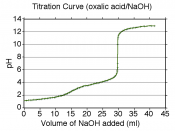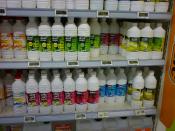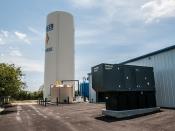Date: October 22, 1998 Experiment Title: The Chemistry of a Coordination Complex Part II. Analysis B) Narrative Introduction (Preperation): In part I of this experiment, my lab group created a nickel complex by using a Lewis base (NH3) and adding it to the Ni2+ metallic ion. When dissolved in water, the water and ammonia are used as ligands in order to form the complex by way of coordinate covalent bonds. A week later, my lab partner and I took the dried out Ni(NH3)2+ and began to analyze the complex. This was done in order to accomplish the main goal of determining the ammonia per gram of complex. The practicality of knowing these facts is for the use of determining the stoichiometry of the complex (how many ammonia molecules are bound to the metal Ni2+ ion).
Procedure: After the creation of the nickel complex, we had to create a standardized NaOH solution by adding 25ml of 1.0M
NaOH and adding it to approximately 225ml of deionized water. Then the molarity of this NaOH solution must be determined by titrating .2M HCl into the NaOH. The molarity of the NaOH is needed in order to be used for the titrations later in the experiment.
After determining the molarity of the NaOH, we had to break-up three samples of the nickel complex (.2g - .22g), and then add 35 ml of HCl. Since 35ml of HCl is more then enough acid to break up such a small amount of nickel complex, HCl will remain. The amount of HCl remaining is determined by titrating the standardized NaOH into the solution.
Discussion of Results: In the end, our results showed that the average moles per gram of ammonia was.273. Results have very good precision and should have good accuracy. Sources of Error...


